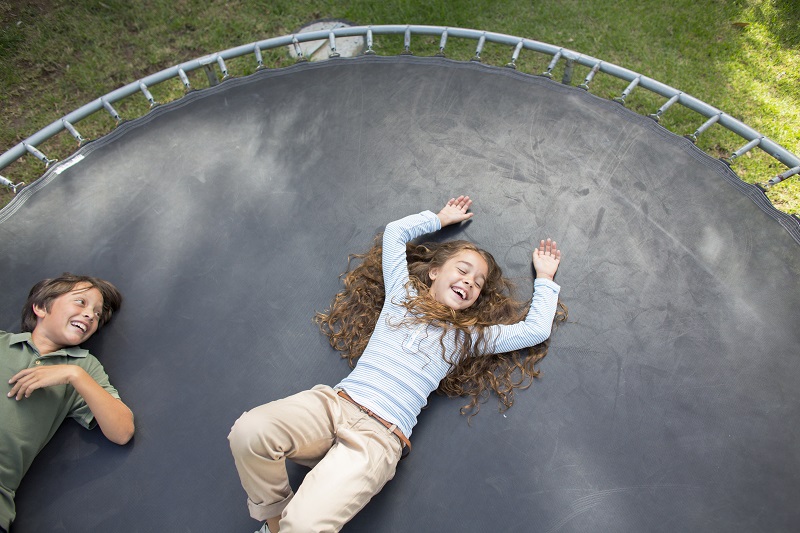
Big backyard? Extra money? Bored or inactive kids? That’s the perfect recipe for buying a new trampoline! While there’s no doubt trampolines are fun for children and adults, did you know that the American Academy of Pediatrics does not recommend the use of home trampolines?
There are approximately 100,000 medically treated trampoline injuries each year, and that number is on the rise due to the trampoline's heightened popularity in recent years. If you are considering buying one, or if you've already made the purchase, read this injury and safety information before your family's next "backyard" evening.
What injuries are caused by trampoline use? Injuries to children playing on trampolines are on the rise, mainly because trampolines have increased in popularity. Serious injuries occur to all parts of the body, including the neck, arms, legs, face, and head. Head and neck injuries are the most serious injury associated with trampolines. Neck injuries usually happen when children try to do flips and land on their head or neck instead of their feet. Every year many children are paralyzed for life from a trampoline injury. The injury rate is highest for children younger than 6 years old.
How are most injuries caused?
Almost 75% of injuries on trampolines result when more than one person is on the trampoline at the same time. When two people use the trampoline, the person weighing less is 5 times more likely to be injured than the heavier person. Adult supervision is no guarantee that a child will be safe on a trampoline. More than half of all trampoline injuries occur while the child is being watched by an adult. Having spotters around the tramp helps reduce some of the risk of injury. Spotters need to be people big enough and strong enough to protect the jumper if he should get too close to the edge. Spotters are especially important when your child has friends over to jump.
How can I make trampoline jumping safer?
If your child already uses a trampoline, you should follow these safety measures.
Location of the trampoline and safety features:
-
Clear the area around the trampoline of objects and do not set the trampoline near trees, fences, poles, or other playground equipment.
- Set the trampoline where an energy-absorbing surface (for example, tall grass) surrounds it.
- Buy and use a frame pad that covers the entire area of the spring system.
- Enclosure netting reduces injuries by about one-third. However netting does not prevent crippling injuries from trampoline use.
- If possible, lower the height to ground level by putting the trampoline in a pit.
Before using the trampoline:
-
Set rules for trampoline use and discuss them often with your children.
-
Tell your children about the risks of not using the tramp properly.
-
Have your children remove any necklaces.
Using the trampoline:
-
Have someone properly train your child how to do flips and other complex stunts.
-
Never allow more than one person to use the trampoline at the same time.
-
Do not allow bouncing followed by jumping off of the trampoline.
-
Have an adequate number of spotters around the edges of the trampoline.
Contact the following organizations to learn more about trampoline safety:


